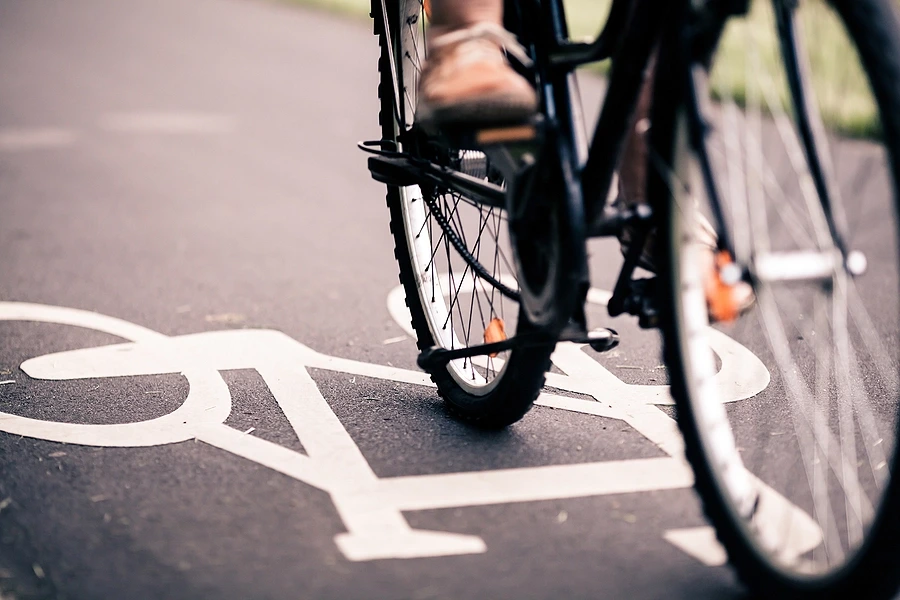Preventing Bike Accidents in Palm Harbor: Tips for Drivers and Cyclists to Coexist

Bicycling is a popular mode of transportation and recreation in Palm Harbor. It promotes exercise, reduces traffic congestion, and is environmentally friendly. However, the increase in cyclists on the road also raises the risk of accidents. Bike accidents can result in serious injuries, long-term medical issues, and legal complications.
Both drivers and cyclists share responsibility for safety. Understanding each other’s rights and responsibilities on the road can prevent accidents and save lives. Awareness, communication, and adherence to traffic laws are essential to creating safer streets for everyone.
Common Causes of Bicycle Accidents
Bicycle accidents can occur for a variety of reasons. Some of the most common causes include:
- Driver negligence: Distracted driving, speeding, and failure to yield to cyclists are major contributors.
- Cyclist mistakes: Ignoring traffic signals, riding against traffic, or weaving between cars increases the risk of collisions.
- Poor road conditions: Potholes, debris, and inadequate bike lanes make accidents more likely.
- Visibility issues: Accidents often occur when cyclists are not easily seen due to poor lighting, clothing, or reflective gear.
- Improper turning: Drivers turning without checking for bicycles, or cyclists failing to signal turns, frequently cause collisions.
Recognizing these risks allows both drivers and cyclists to take preventive measures.
Tips for Drivers to Prevent Bicycle Accidents
Drivers play a critical role in reducing bike accidents. Awareness and patience are essential. Here are key safety practices:
- Stay alert: Avoid distractions like texting, eating, or using apps while driving. Always scan the road for cyclists.
- Keep a safe distance: Maintain at least three feet of clearance when passing a bicycle. This space reduces the risk of sideswipe accidents.
- Check blind spots: Cyclists can easily disappear in mirrors or blind spots, particularly at intersections or when changing lanes.
- Obey traffic laws: Yield the right of way when required, stop at red lights and stop signs, and follow speed limits.
- Use signals: Properly signaling turns or lane changes informs cyclists of your intentions and prevents misunderstandings.
- Be extra cautious at intersections: Many bike accidents occur when drivers turn across a cyclist’s path. Slow down, look carefully, and yield when necessary.
Following these practices reduces the likelihood of accidents and demonstrates respect for cyclists’ rights on the road.
Tips for Cyclists to Stay Safe
Cyclists also have responsibilities to protect themselves. Awareness, preparation, and proper equipment can prevent accidents.
- Follow traffic rules: Obey traffic signals, ride in the same direction as traffic, and use bike lanes where available.
- Be visible: Wear bright clothing, reflective gear, and use front and rear lights, especially in low-light conditions.
- Signal turns and stops: Use hand signals to communicate your intentions to drivers and other cyclists.
- Stay alert: Avoid listening to music or using phones while riding. Watch for road hazards and unpredictable drivers.
- Maintain your bicycle: Regularly check brakes, tires, and lights to ensure your bike is safe for use.
- Use protective gear: Helmets are essential, and additional padding or gloves can reduce injury in the event of a crash.
By following these guidelines, cyclists reduce their risk of injury and contribute to safer roadways for everyone.
Shared Responsibility and Communication
Safety on the road depends on cooperation between drivers and cyclists. Awareness of each other’s presence, expectations, and limitations helps prevent collisions. Simple gestures, like making eye contact or acknowledging right-of-way, can reduce confusion and improve road safety.
Community education programs, signage, and public campaigns in Palm Harbor also promote shared responsibility. Drivers who understand common cyclist behaviors and cyclists who understand vehicle limitations are more likely to avoid accidents.
The Role of Road Infrastructure
Infrastructure improvements can significantly reduce bike accidents. Dedicated bike lanes, clear signage, and well-maintained roads create a safer environment for cyclists. In Palm Harbor, attention to potholes, debris, and proper lighting enhances visibility and reduces hazards. Crosswalks, bike boxes at intersections, and traffic calming measures also encourage safer interaction between vehicles and bicycles.
What to Do After a Bike Accident
Despite precautions, accidents can still happen. Knowing the steps to take afterward is crucial:
- Ensure safety and seek medical attention: Immediate care for injuries is the priority. Even minor injuries should be evaluated.
- Report the accident: Notify local law enforcement and file a report if necessary. Documentation can be critical for insurance or legal purposes.
- Gather evidence: Take photos of the scene, damages, and injuries. Collect contact information from witnesses.
- Contact an attorney: If you suffered serious injuries due to negligence, a personal injury lawyer can help protect your rights and pursue compensation.
Prompt action after an accident improves outcomes and ensures that victims have the evidence needed for legal or insurance claims.
Legal Protections in Palm Harbor
Florida law provides protections for both cyclists and drivers. Drivers are legally required to exercise reasonable care to avoid harming cyclists, while cyclists are expected to follow traffic laws. In cases of injury, liability may be shared depending on negligence, following the comparative fault system.
Personal injury attorneys help victims navigate these laws, negotiate with insurance companies, and pursue compensation for medical bills, lost wages, and pain and suffering. Legal guidance ensures that victims are treated fairly and that negligent parties are held accountable.
Conclusion
Preventing bicycle accidents in Palm Harbor requires cooperation, awareness, and adherence to traffic laws from both drivers and cyclists. Understanding common causes, practicing safety measures, maintaining proper road infrastructure, and knowing what to do after an accident all contribute to safer streets. Legal protections exist to support victims of negligence, and personal injury attorneys provide essential guidance in navigating claims. By working together and staying vigilant, drivers and cyclists can coexist safely while enjoying the many benefits of a more active and environmentally conscious community.
